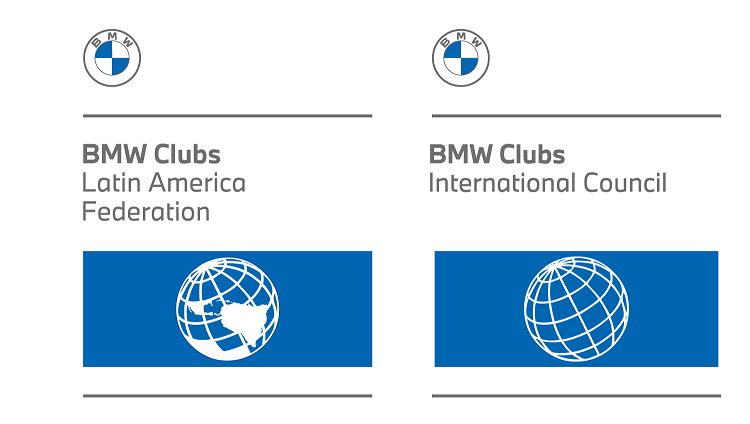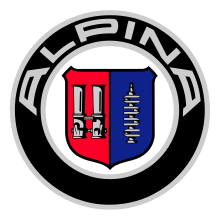
Alpina History
Alpina's roots can be traced back to 1962 when Burkard Bovensiepen developed a Weber dual carburetor for the BMW 1500. This carburetor was well received by the automotive press, as well as BMW's own sales boss Paul G. Hahnemann. In 1964, BMW certified the quality of this Alpina product by awarding BMW vehicles fitted with the Alpina system the full factory guarantee.
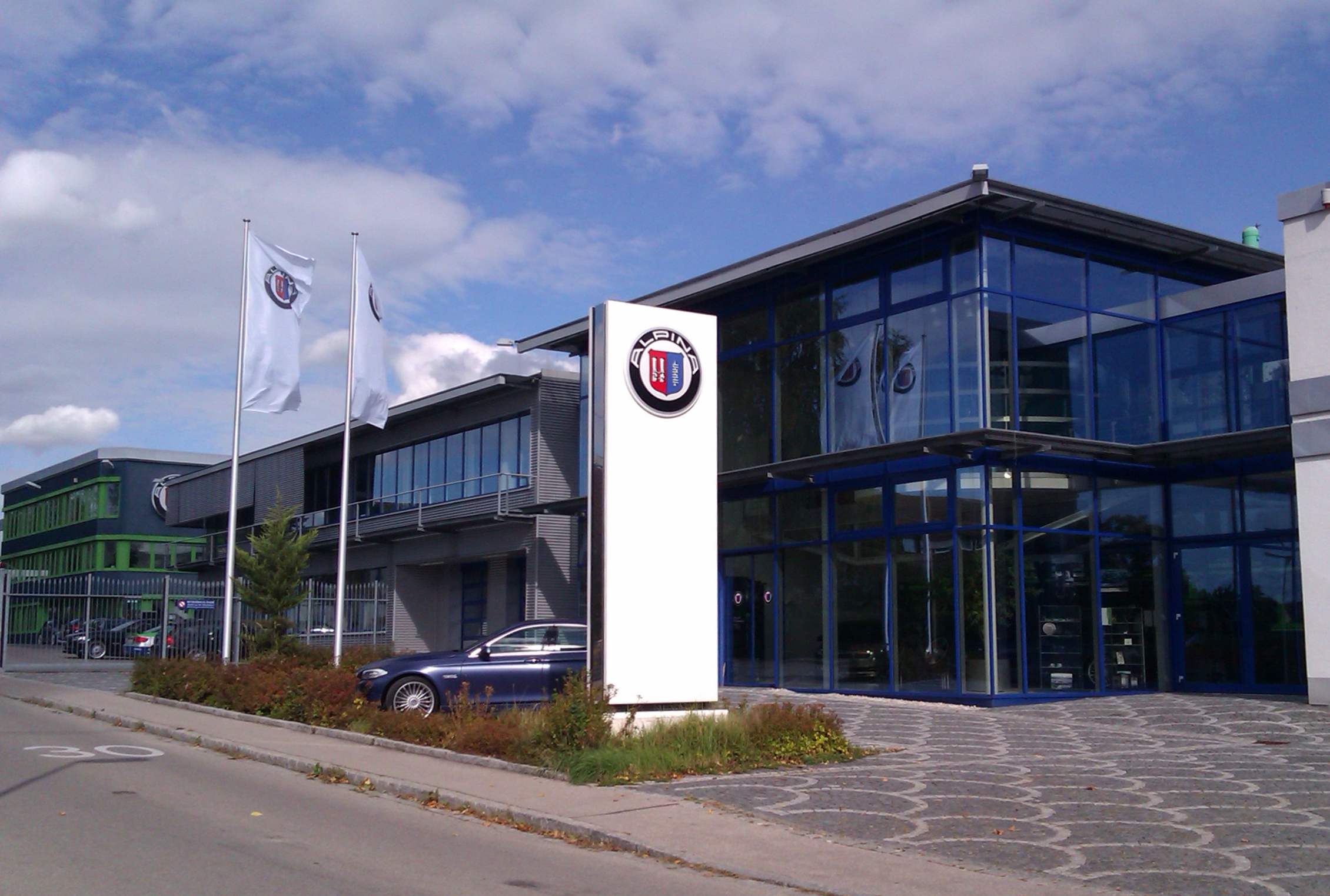
ALPINA Buchloe’s Plant
Alpina Burkard Bovensiepen KG was established on 1 January 1965 in Kaufbeuren, Bavaria. The company had eight employees.
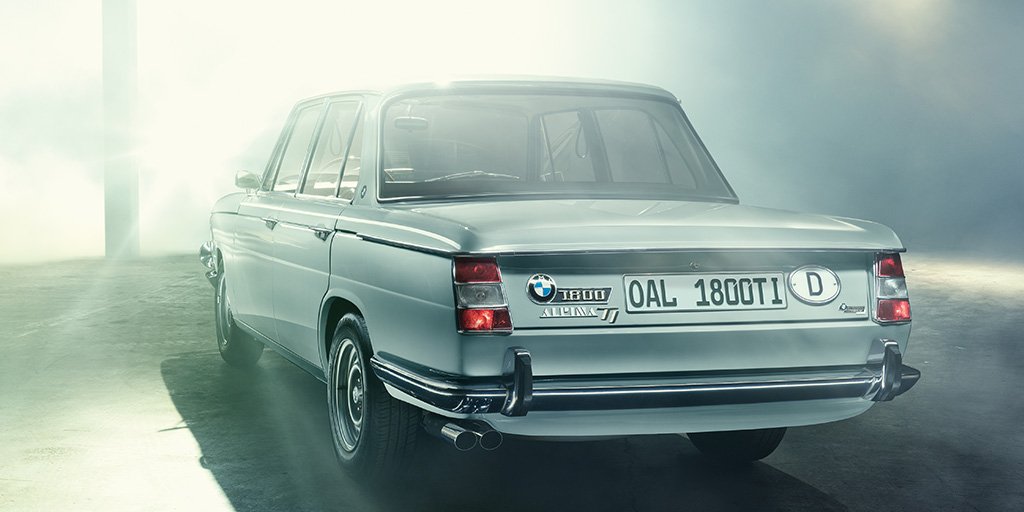
BMW Alpina 1800 NK
Although Alpina started by producing typewriters, the original Alpina ceased to exist at the end of the 1960s in their attempt to move into the textile industry. In 1965, Burkard established a BMW tuning business, following his success with investments in the stock market. He started the tuning business in an outbuilding of the original Alpina typewriter factory. The company worked on carburetors and revised cylinder heads. By 1970, with seventy employees, the original facility changed locations from Kaufbeuren to Buchloe.
In its first years, Alpina established its core competency by tuning carburetors and crankshafts to extract more power from BMW engines, elements that eventually defined the company's logo, which came into being in 1967.

Alpina BMW 2002 E10
Between 1968 and 1977, Alpina cars did very well in competition. The highlight was in 1970, when the team's cars won the European Touring Car Championship, the German Hillclimb Championship, rally and track racing championships and the prestigious Spa 24 Hours.
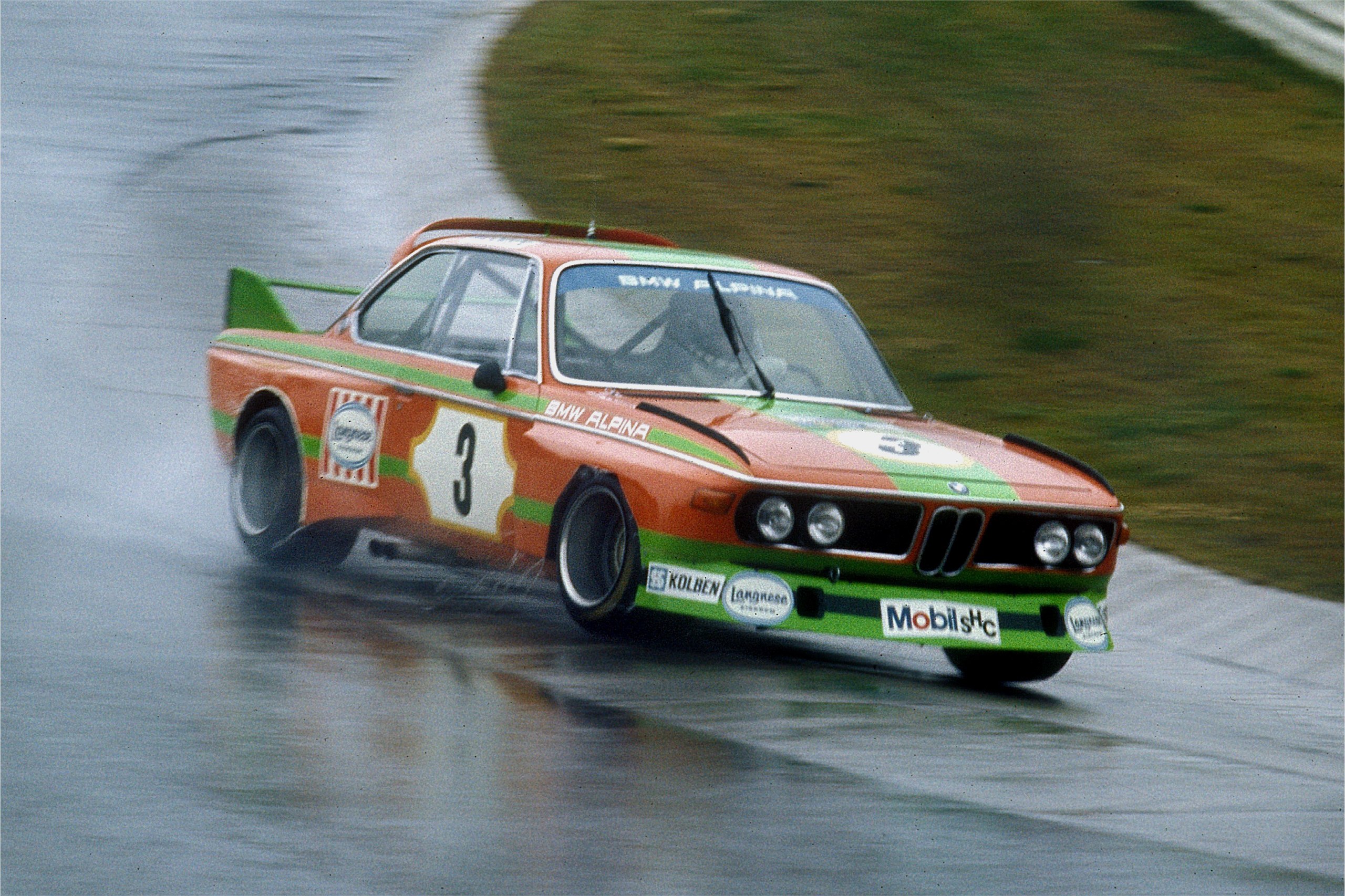
BMW Alpina 3.0 CSL E9
Since 1983, Alpina has been recognized by the German Federal Ministry of Transport as an automobile manufacturer, thus Alpina-built cars are branded and registered as Alpina instead of BMW, although an Alpina can be serviced at all BMW dealerships, and is fully covered if there is a warranty issue. Alpina automobiles are also sold at some BMW dealerships.

Alpina B12 6.0 E38
Distinctive features of Alpina vehicles are the fact that these models are literally "manu-factured", meaning "hand-made". The production process switches between fine tuning the engine, delivering it to the BMW plant, marrying engine and body there, bringing it back to Alpina for interior upgrade with Alpina's specific components, again all in a hand-made process that allows only limited production numbers. Besides engine and interior, Alpina also optimizes the transmission and installs steering wheel mounted button-shifters (called Switch-Tronic) on most cars, with paddle shifters used on the B4 S Edition 99. This has historic reasons, since Alpina was the first to mount shifting buttons on the steering wheel.
The hallmarks of the exterior are the 20-spoke alloy wheels with hidden valves under the center cap and the metallic "Alpina Blue or Green" exterior colors.
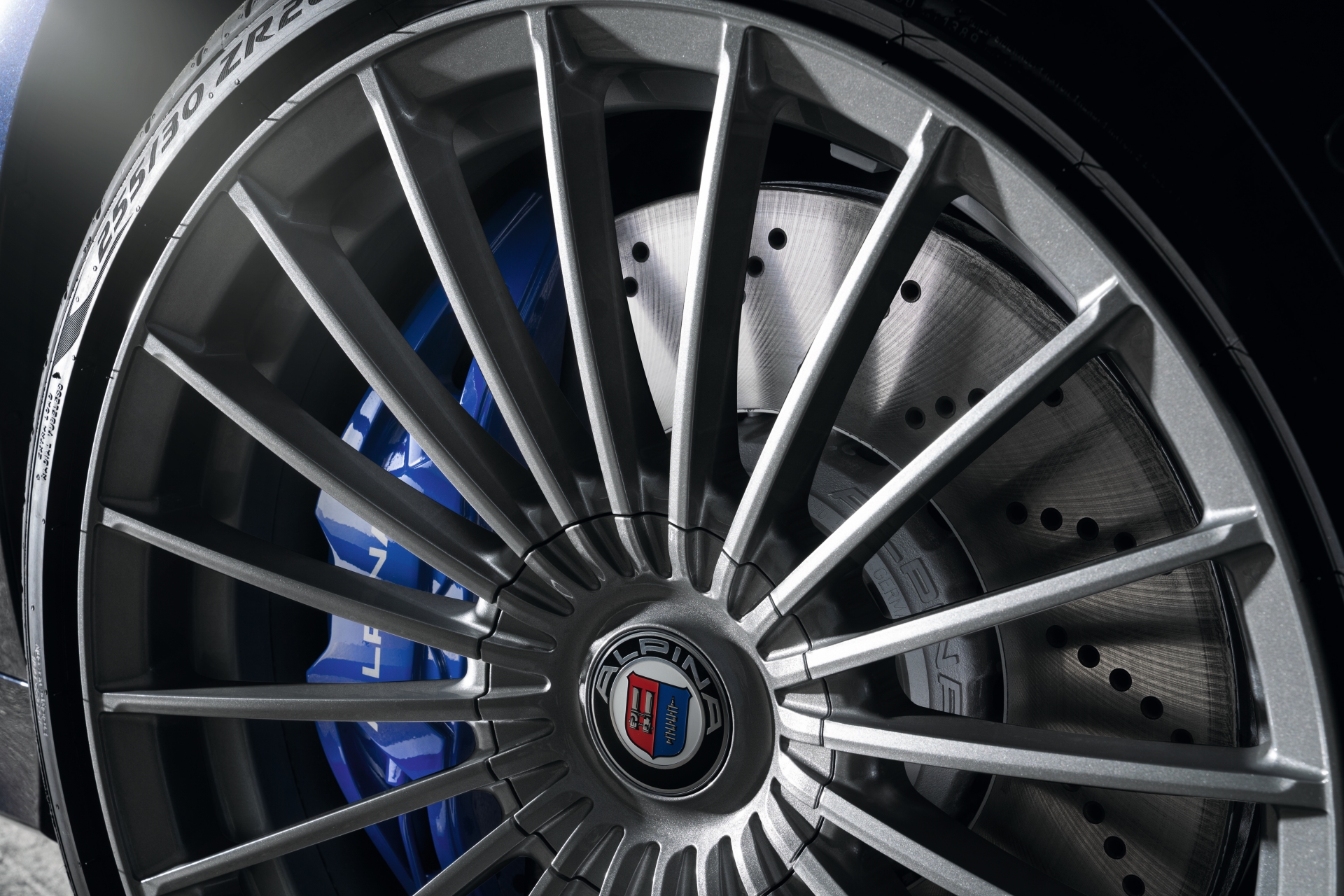
Alpina Classic Wheel and Alpina Blue Caliper
Inside, the best materials are used to make the exclusive feel. A typical blue and green pattern is often used on interior parts, such as stitching on leather.
Striped and slim style exterior body decoration set in gold or silver is also a hallmark of older Alpina cars, which is an option on new Alpina models.
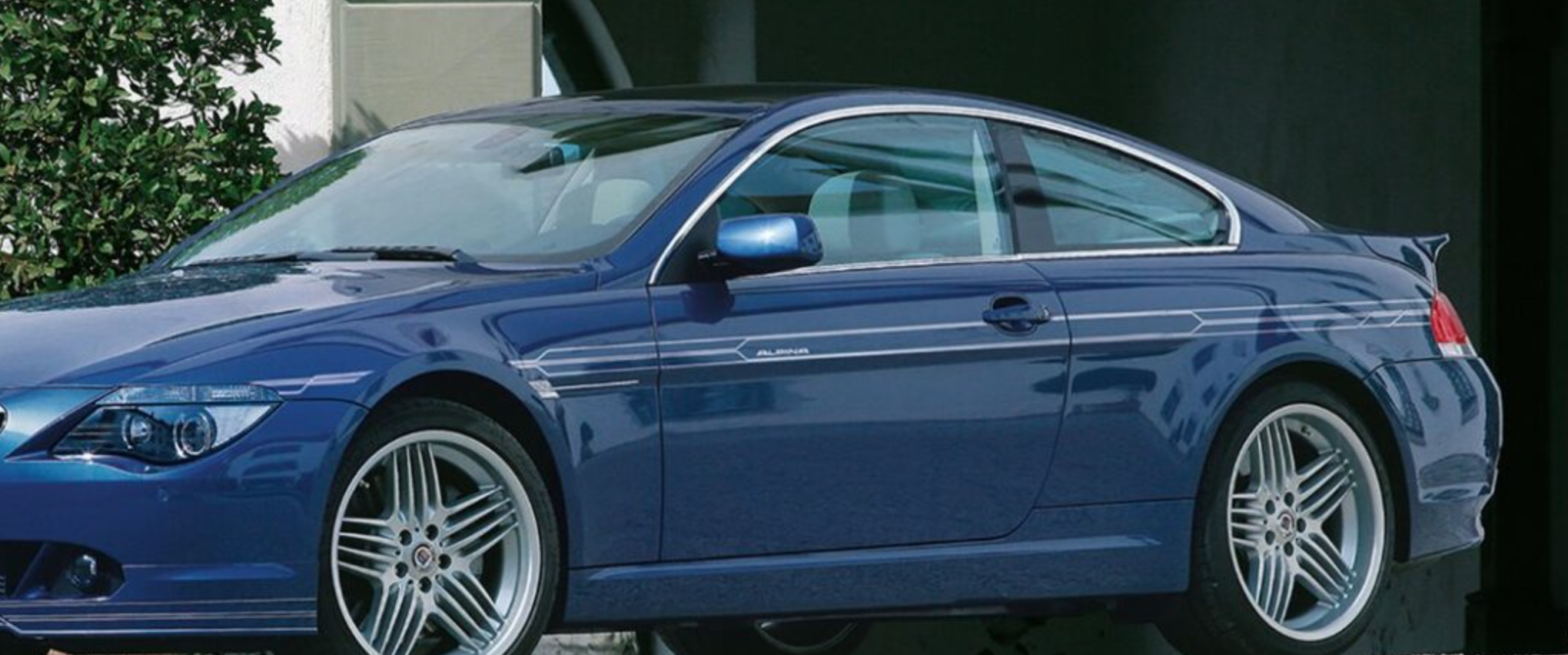
Alpina B6S E63 – Alpina Blue Color and Alpina Double Stripe Silver
A metal plate inside also proves the car's heritage and serial number.
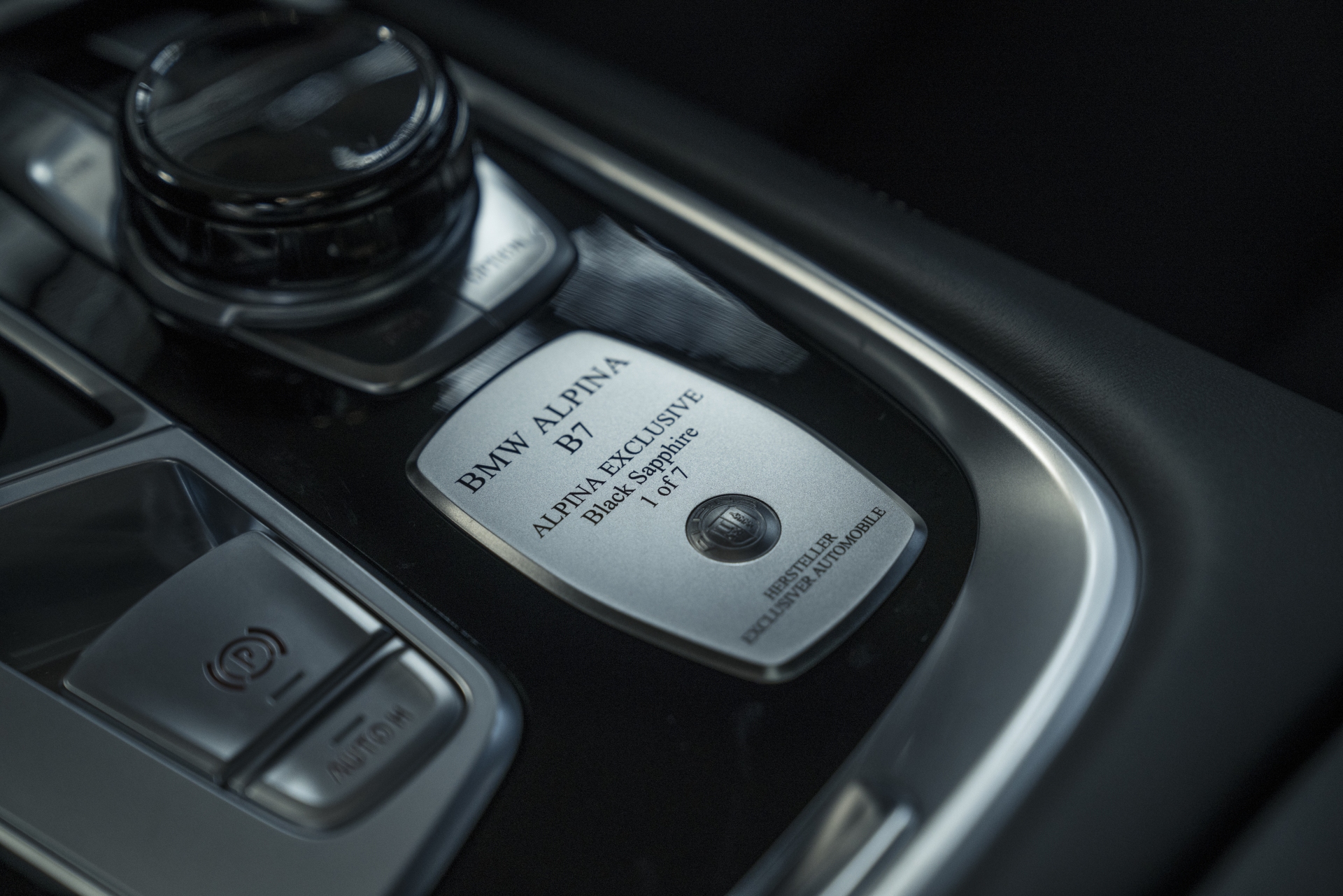
Alpina’s Personalized Nameplate
Alpina is the perfect mix between BMW Motorsport performance and Rolls Royce style, best materials and technology.
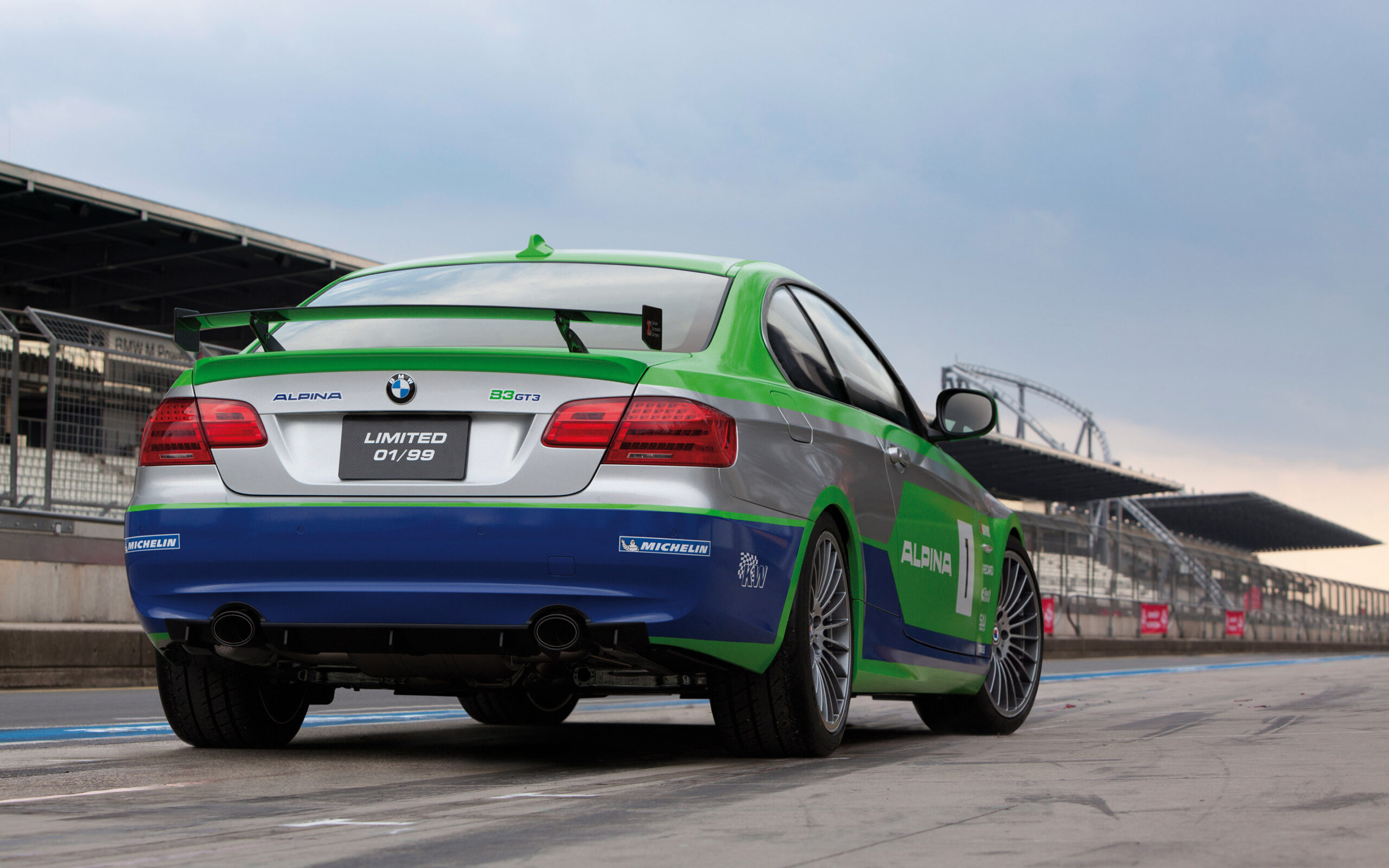
Alpina B3 GT3 E92
